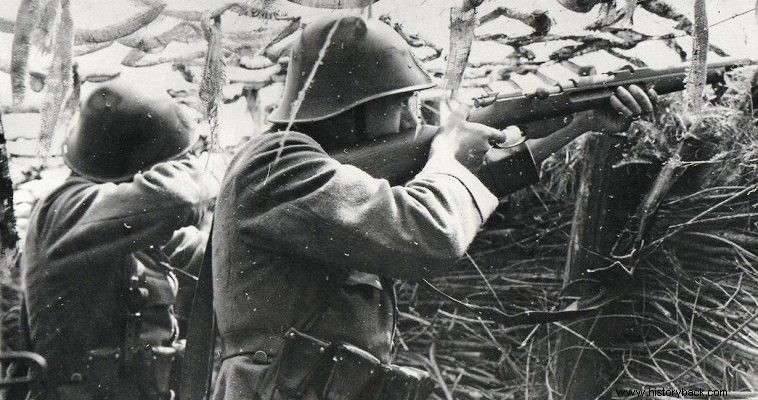
The village of Mill is located in North Brabant near the Belgian border, not far from the banks of the Maas. In 1940 it was part of the Peel – Raam defense site. In the area of the village the Dutch had built 47 artillery pieces and deployed two infantry battalions.
The machine guns were built at a distance of 200-300m. from one another. In front of them there was an irrigation canal that functioned as an excellent anti-tank ditch. The Dutch had installed minefields in front of the artillery which were connected by trenches covered with barbed wire. All the bridges and the railway line had been undermined.
They alsohad an artillery squadron with 12 "ancient" guns (entered service in 1881) of 84mm. and eight 57mm infantry escort guns. (4 per battalion) but also an engineer company. By sending reinforcements during the battle the Dutch came to have about 2,000 men under the 3rd Army Corps (SS) of Lieutenant General Adrianos Antonios van Nijnaten.
The Germans lined up the 256th Infantry Division against these forces (MP), under Lieutenant General Gerhard Kaufmann. The Germans had to attack Mill's location as they could not overrun it.
The Germans also used an unarmored armored train during the attack. On another train was Major Schenck's 3/481st Infantry Battalion (TP). The German battalion had 40 machine guns, 15 mortars, three anti-tank guns, two 75 mm guns. and four flamethrowers.
Attack, encirclement
The Germans arrived in front of Mill's position at around 04.30 on the morning of 10 May 1940, just 30 minutes into their invasion of Dutch territory. The Dutch were waiting for them. But when they saw the two trains, thinking they were theirs, they didn't open fire. Thus the Germans managed to reach unmolested about 1.5 km behind the Dutch position.
The German battalion disembarked and reported that it surprised and broke the Dutch defense. Then Major Schenk decided to send the armored train back. But the Dutch had now recovered from the surprise and derailed it. The few German soldiers aboard it disembarked and attempted to attack the nearby Dutch guns but to no avail.
Meanwhile the German battalion attempted to attack the Dutch artillery from the rear. The Germans suddenly came under Dutch artillery fire and were pinned down for about an hour. Another German attack on Dutch guns repulsed.
With a new attack from the south, the Germans captured nine Dutch artillery pieces. Continuing the attack, they attempted to capture another machine gun, but a Dutch soldier locked himself inside and began firing furiously, single-handedly forcing the Germans to retreat.
The bulk of the German battalion retreated to the point where the armored train had derailed. The Germans attacked the advanced Dutch positions from the flank. The Dutch, though outnumbered, resisted bravely for four hours. Only around 11.00 in the morning did the resistance cease.
Counter attack, reinforcements, split
The Germans had created a perimeter of about 1,500 m radius and, unable to do anything else, waited for reinforcements. Meanwhile the Dutch, worried about the gap that had been created in their order, reinforced their forces at Mill with a regiment of cavalry (motorcycle hussars).
Hussars arrived in the area and immediately took action and destroyed the train carrying the German troops. However, around noon, the other two battalions of the German 481st Infantry Regiment (SP) arrived in the area and immediately attacked.
However, these forces were repulsed by the Dutch and failed to make contact with the isolated 3/481st Battalion. In the meantime, the Dutch hussars continued their counterattack, recovering positions that had been occupied by the Germans.
At the same time, the attack of the 481st SP was not progressing positively at all for the Germans who were pinned down in front of the Dutch artillery line, also receiving fire from the Dutch artillery. The commander of the 481st SP, Lt. Col. Weber, nevertheless decided to repeat the attack using all his forces.
The German offensive turned into a bloody failure in the face of the stubborn Dutch defense. It wasn't until 18.00 that the German artillery began to support the attack, while the German 456th Infantry Division also arrived in the area. Opposite the six German battalions there were only 360 Dutch.
At the same time, the German air force intervened, bombing the Dutch positions with fury. But again, the German infantry, as soon as they moved, received heavy fire from the defenders. It wasn't until 10:00 PM that the Germans succeeded in achieving a breach in the Dutch defense.
The Dutch troops were ordered to retreat having severely bloodied their opponents. The Germans had over 500 dead and wounded, compared to 80 for the Dutch. I and nine Dutch civilians were killed in the battle. The Germans lost a whole day to the heroic defense of their opponents at Mill. Unfortunately for the Dutch, there were no reserves to take advantage of the situation.
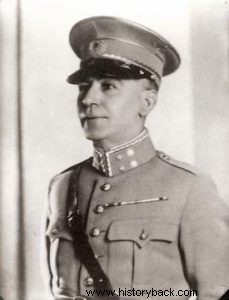
The Dutch lieutenant general Hadrian Antonios van Nijnaten, responsible for the defense in the area.
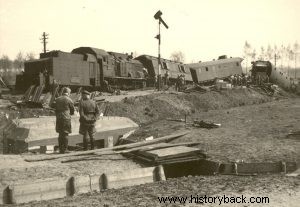
The derailed German train.
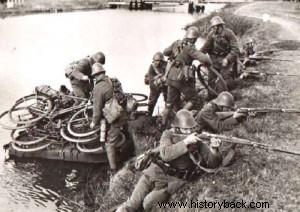
Dutch cyclists deploy on canal.
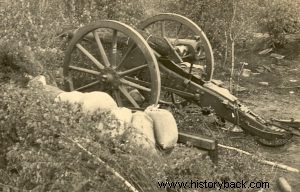
Dutch 84mm gun. These guns entered service in 1881.
